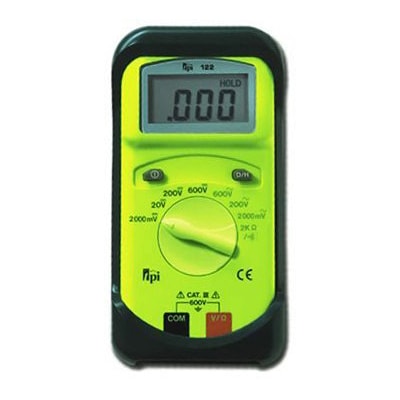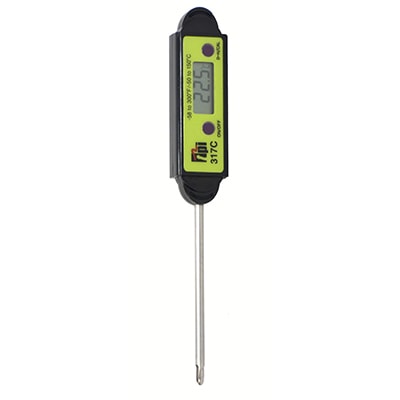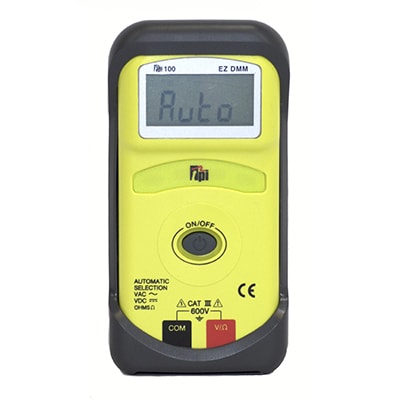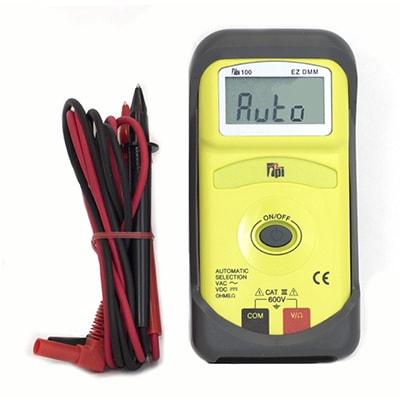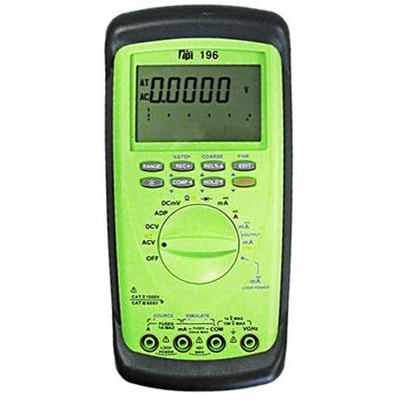122 Digital Multimeter
£37.50
Compact DMM with adapter range for optional accessories, 0.5% DCV basic accuracy.
In stock
Description
Compact DMM with adapter range for optional accessories, 0.5% DCV basic accuracy.
- 2,000 mvDC (2 DCV) adapter range
- 2,000 count display
- 0 to 600 volts AC and DC
- 0 to 2,000 ohms
- Audible continuity
- 10 MOHM internal impedance
- 0.5 % DCV basic accuracy
- cULus 61010-1
- CAT II – 1000V, CAT III – 600V
Specifications
| Model 122 Specifications | ||
|---|---|---|
| DC Volts | Maximum Input: 600V
Maximum Resolution: 1mV Accuracy: +/-0.5% |
|
| AC Volts | Maximum Input: 600V
Maximum Resolution: 1mV Accuracy: +/-1.2% |
|
| DC Amps | N/A | |
| AC Amps | N/A | |
| Resistance (Ohms) | Maximum Input: 2KΩ
Maximum Resolution: 0.001Ω Accuracy: +/-0.5% |
|
| Frequency | N/A | |
| Capacitance | N/A | |
| Inductance | N/A | |
| Temperature
(K-Type Thermocouple) |
N/A | |
| Continuity | Audible at less than 100Ω | |
| Diode | N/A | |
| Duty Cycle | N/A | |
| True RMS Responding | No | |
| Conductance | No | |
| Pulse Width | No | |
| Data Hold | Yes | |
| Min/Max Record | No | |
| Time Stamp Logging | No | |
| Relative Mode | No | |
| Compare Mode | No | |
| RS-232 Output | No | |
| Process Loop Output | No | |
| Sleep Mode / Auto Off | No | |
| Protective Boot | Yes (standard) | |
| Display Type | 2000 count LCD | |
| Range Selection | Manual | |
| Operating Temperature | 32°F to 104°F (0°C to 40°C) | |
| Storage Temperature | 14°F to 122°F (-10°C to 50°C) | |
| Humidity | 80% non-condensing | |
| Size | 6” x 3.1” x 1.2” (187mm x 86mm x 33mm) with boot | |
| Weight | 12oz (340g) with boot | |
| Battery Type | 9V Alkaline (NEDA 1604) | |
| Battery Life | 500hrs Typical | |
| OverInput Category | CAT III 600V | |
| Agency Approval | IEC 61010-1 | |
| Warranty | 3 Years | |
Applications
Tech Tips
Category Ratings:
- Category I: Usually electronic equipment or equipment where measures have been taken to limit transient over voltages.
- Category II: Single phase loads like appliance personal computers, television sets, and other household loads. Outlets located more than 30 feet froma CAT III source or more than 60 feet from a CAT IV source.
- Category III: Distribution level fixed installations like distribution panel devices, short branch and feeder circuits, three phase loads, and single phase commercial lighting.
- Category IV: Equipment and lines located on the power line side of a service panel or where a low voltage connection is made to utility power

